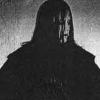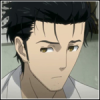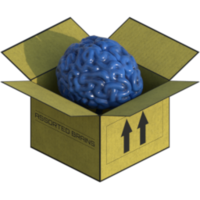The Lord of the Rings: Return of the King game (EA, 2003) also has a circular meter which impressed me a lot, as it's such an usual shape for a meter.

That is, until I realized the functionality named "Stencil testing". You set up the stencil buffer, draw a polygon marking the region you want the life content to appear (or not appear, depends on the stencil function), draw the content that's going to be stencil-tested and as last step you draw the life bar's frame or edges on top.
• You can do it directly as a textured mesh that's vertex-animated as has been suggested above, and I agree that it's what the game you're referring to is using - based on the small textures employed that only have a "slice" of what the entire graphic should be.
• Using the aforementioned stencil test and dedicated sprites gives you more graphical quality: you can have your artist embelish the life bar and life content designs with patterns and ornaments. This is good for circular\round meters, life-bars, counters and in fact any shape of graphic you want. If you have square or rectangular shapes, you can also use a scissor test which I think it's a bit faster and simpler to set up.
I used stenciling with a circular meter for a game, as a composite of sprites and one of the sprites was stencil-tested so as to look cut-off:

The above is just a mockup. It looked like this in the game:

• http://en.wikibooks.org/wiki/OpenGL_Programming/Stencil_buffer#Sample
• http://research.ncl.ac.uk/game/mastersdegree/graphicsforgames/scissorsandstencils/Tutorial%205%20-%20Scissors%20and%20Stencils.pdf#page=7














